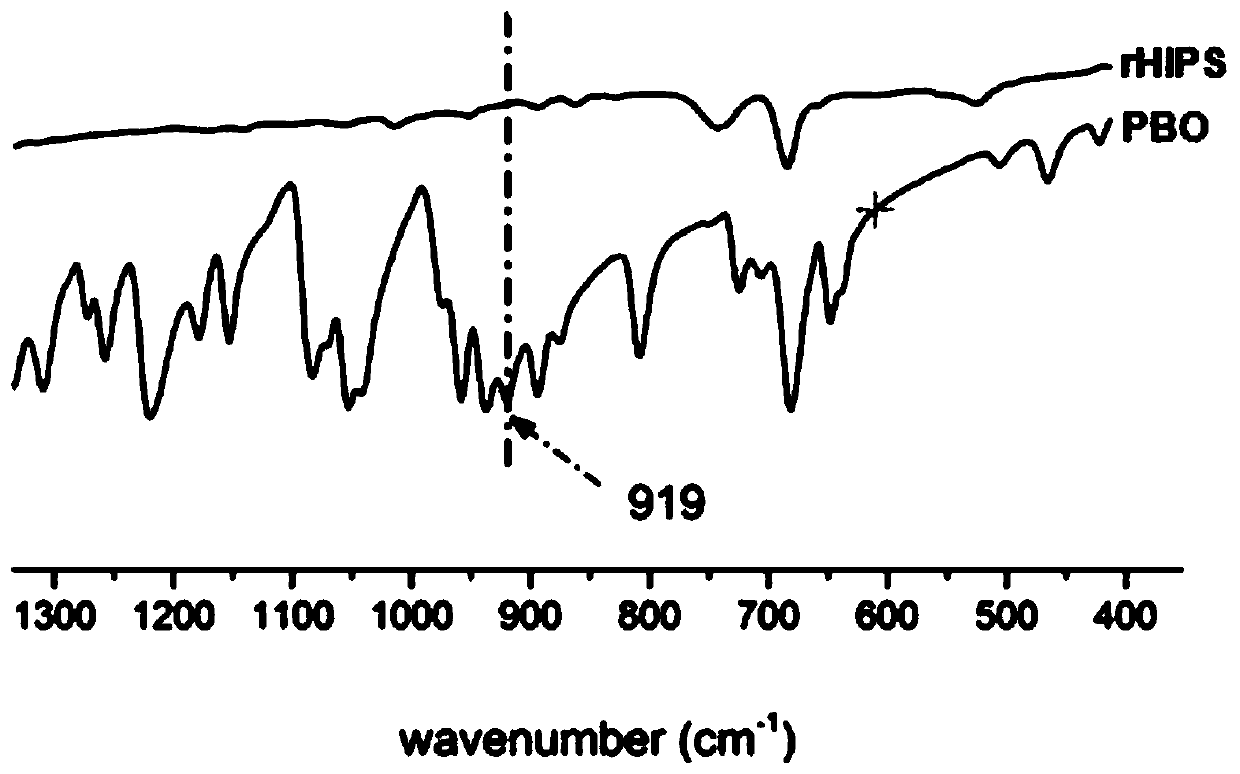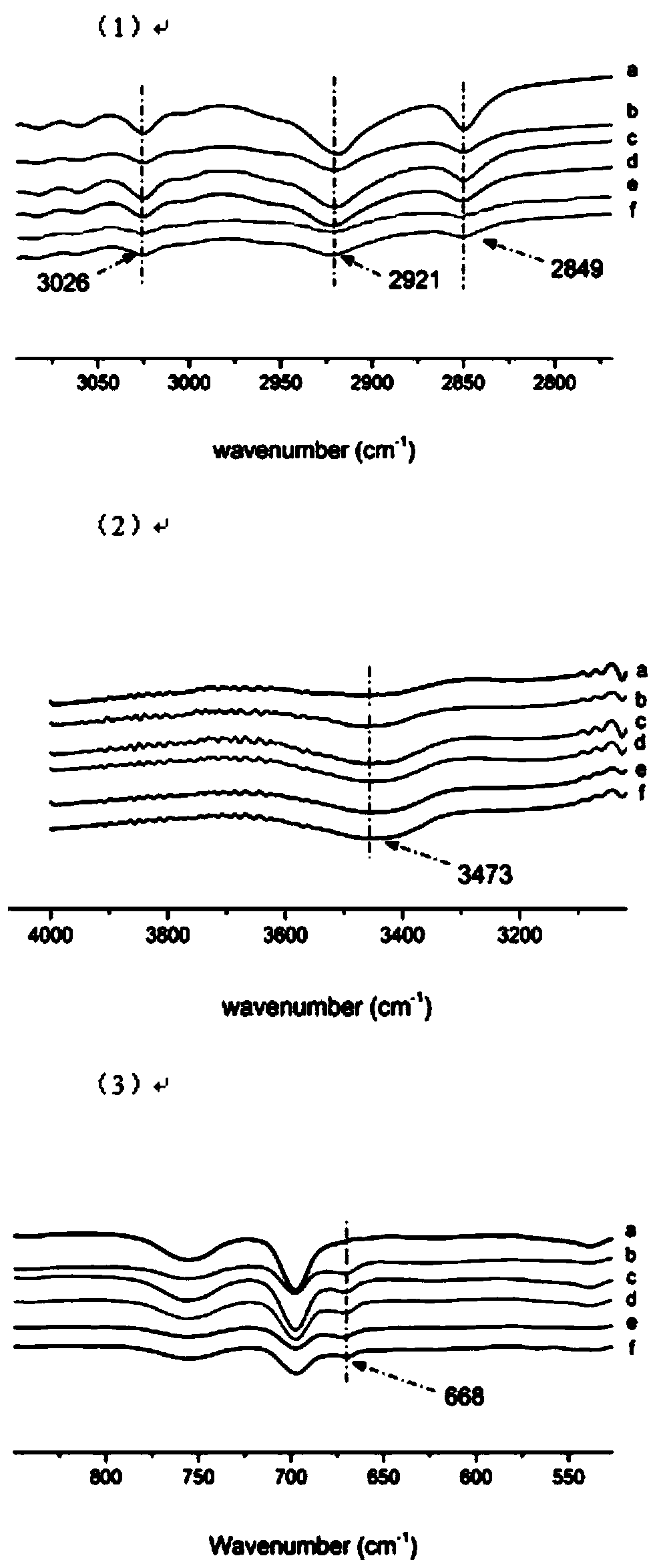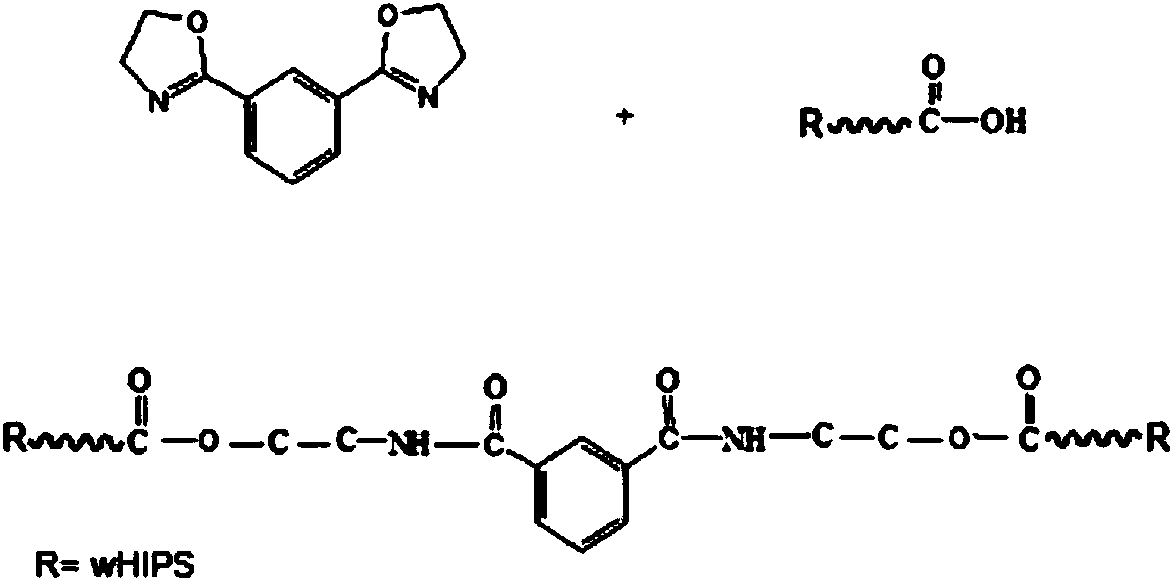Recycling method of waste HIPS
A waste and chain extender technology, applied in recycling technology, plastic recycling, etc., can solve problems such as inappropriate promotion, coking phenomenon, lack of macro performance, etc.
- Summary
- Abstract
- Description
- Claims
- Application Information
AI Technical Summary
Problems solved by technology
Method used
Image
Examples
Embodiment 1
[0024] The chain extender 2,2'-(1,3-phenylene)-bisoxazoline (PBO) and waste HIPS are added to the twin-screw extruder for blending according to the mass ratio of 1.3:100, and the twin-screw extruder The length-to-diameter ratio of the screw is 40, and the screw is referred to as 450r / min. In the process of melt extrusion, the chain extender reacts with the carboxyl functional group on the molecular chain of the waste HIPS in situ. The temperature control is as follows: T1=180°C, T2=200°C, T3=215°C, T4=230°C, T5=250°C, the speed of the twin-screw extruder is 300r / min, and the residence time in the twin-screw extruder 3-5 minutes, the extruded material is cooled and formed in cold water at 5-30°C, so as to realize the regeneration of waste HIPS.
[0025] The chain extension reaction of PBO and wHIPS is shown in the following formula chain extension one and chain extension two. During the reaction, the oxazoline in the 2,2'-(1,3-phenylene)-bisoxazoline (PBO) structure The ring i...
PUM
| Property | Measurement | Unit |
|---|---|---|
| Impact performance | aaaaa | aaaaa |
| Tensile strength | aaaaa | aaaaa |
| Financial index | aaaaa | aaaaa |
Abstract
Description
Claims
Application Information
 Login to View More
Login to View More - R&D
- Intellectual Property
- Life Sciences
- Materials
- Tech Scout
- Unparalleled Data Quality
- Higher Quality Content
- 60% Fewer Hallucinations
Browse by: Latest US Patents, China's latest patents, Technical Efficacy Thesaurus, Application Domain, Technology Topic, Popular Technical Reports.
© 2025 PatSnap. All rights reserved.Legal|Privacy policy|Modern Slavery Act Transparency Statement|Sitemap|About US| Contact US: help@patsnap.com



